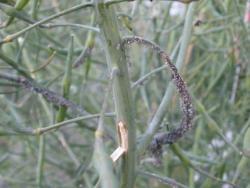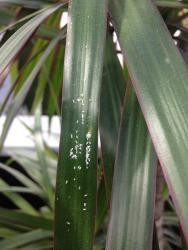Welcome to NGA, plantproblems!
Sue, would a soapy spray help, or washing the leaves under a shower head, or would you suggest isopropyl alcohol on a Q-tip or cloth? Would Neem oil or other horticultural oil help?
Plantproblems, I'm an amateur when it comes to indoor plant care, but I would FIRST wipe away as many as I could with a bit of cloth, or more likely soak that cloth in soapy water or alcohol first. Do it outdoors. Probably also cut off the leaves that are most heavily infested, and bag them tightly before bringing them indoors to the garbage bucket.
If possible, use a hard fine spray or mist of water to blow more of them away (outside). Repeat these kinds of actions a few times per week so you get rid of eggs as they hatch over time.
After knocking off, wiping off, and spraying off as many as are easily removed, I would spray it with store-bought insecticidal soap, or home-made insecticidal soap.
2-6 Tablespoons of a natural soap per gallon of water
Maybe 2-6 ounces of rubbing alcohol per gallon
water plants the day before spraying
Rinse off 3 hours later.
Don’t spray in sun!
But listen to anyone else before me! I'm going mostly from reading. Experience is a much better teacher. But alcohol wiping and a hard water spray both worked well on something similar that infested some huge Brassicas I was saving seeds from (outdoors).
https://www.planetnatural.com/...




